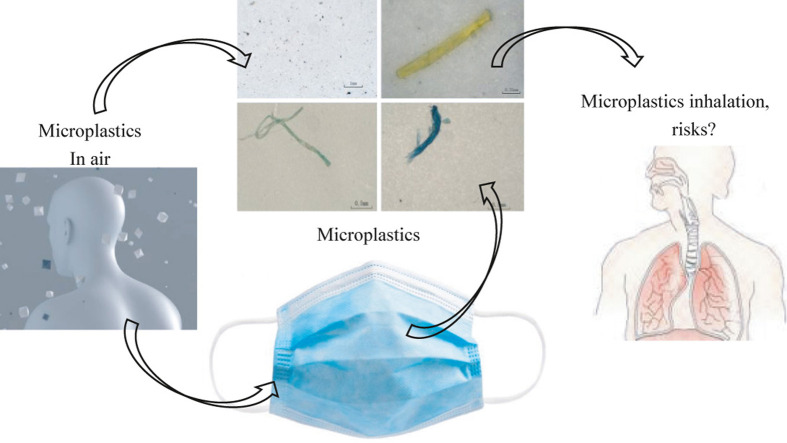- Record: found
- Abstract: found
- Article: not found
COVID-19: Performance study of microplastic inhalation risk posed by wearing masks

Abstract
Wearing face masks has become the new normal worldwide due to the global spread of the coronavirus disease 2019. The inhalation of microplastics due to the wearing of masks has rarely been reported. The present study used different types of commonly used masks to conduct breathing simulation experiments and investigate microplastic inhalation risk. Microplastic inhalation caused by reusing masks that underwent various treatment processes was also tested. Results implied that wearing masks considerably reduces the inhalation risk of particles (e.g., granular microplastics and unknown particles) even when they are worn continuously for 720 h. Surgical, cotton, fashion, and activated carbon masks wearing pose higher fiber-like microplastic inhalation risk, while all masks generally reduced exposure when used under their supposed time (<4 h). N95 poses less fiber-like microplastic inhalation risk. Reusing masks after they underwent different disinfection pretreatment processes can increase the risk of particle (e.g., granular microplastics) and fiber-like microplastic inhalation. Ultraviolet disinfection exerts a relatively weak effect on fiber-like microplastic inhalation, and thus, it can be recommended as a treatment process for reusing masks if proven effective from microbiological standpoint. Wearing an N95 mask reduces the inhalation risk of spherical-type microplastics by 25.5 times compared with not wearing a mask.
Graphical Abstract
Highlights
-
•
Wearing masks poses microplastic inhalation risk, reusing masks increases the risk
-
•
Wearing N95 masks poses lowest microplastic inhalation risks in the long term
-
•
Wearing mask, except for N95, poses higher stripe type microplastic inhalation risk
-
•
Wearing masks poses considerably lower spherical-type microplastic inhalation risk
-
•
Wearing masks leads to lower gross microplastic inhalation risk in the long term
Related collections
Most cited references23
- Record: found
- Abstract: found
- Article: not found
Covid-19 face masks: A potential source of microplastic fibers in the environment
- Record: found
- Abstract: found
- Article: not found
A first overview of textile fibers, including microplastics, in indoor and outdoor environments
- Record: found
- Abstract: found
- Article: not found

